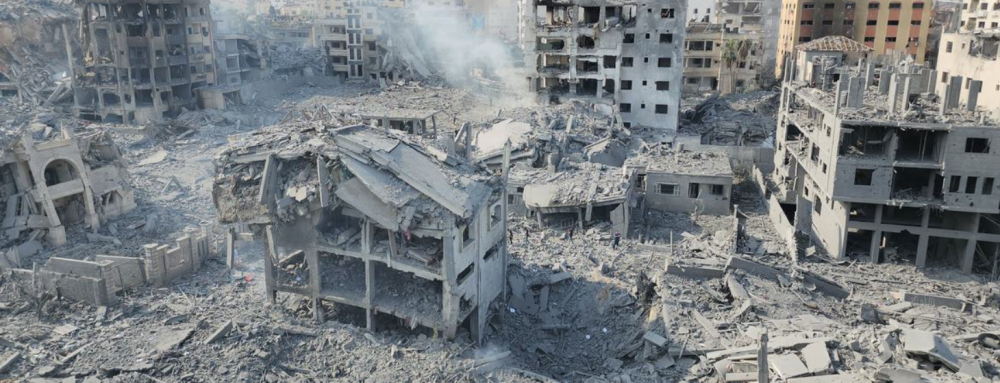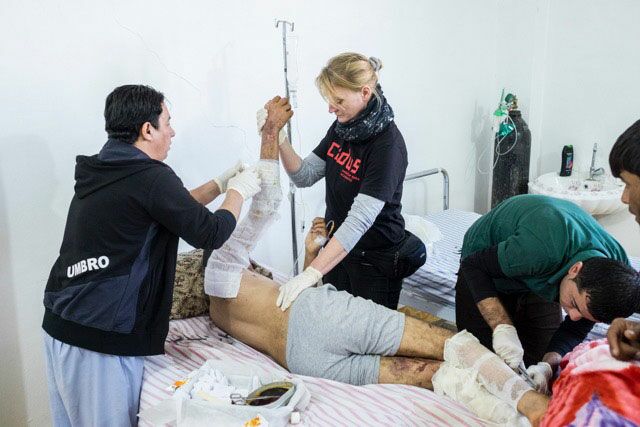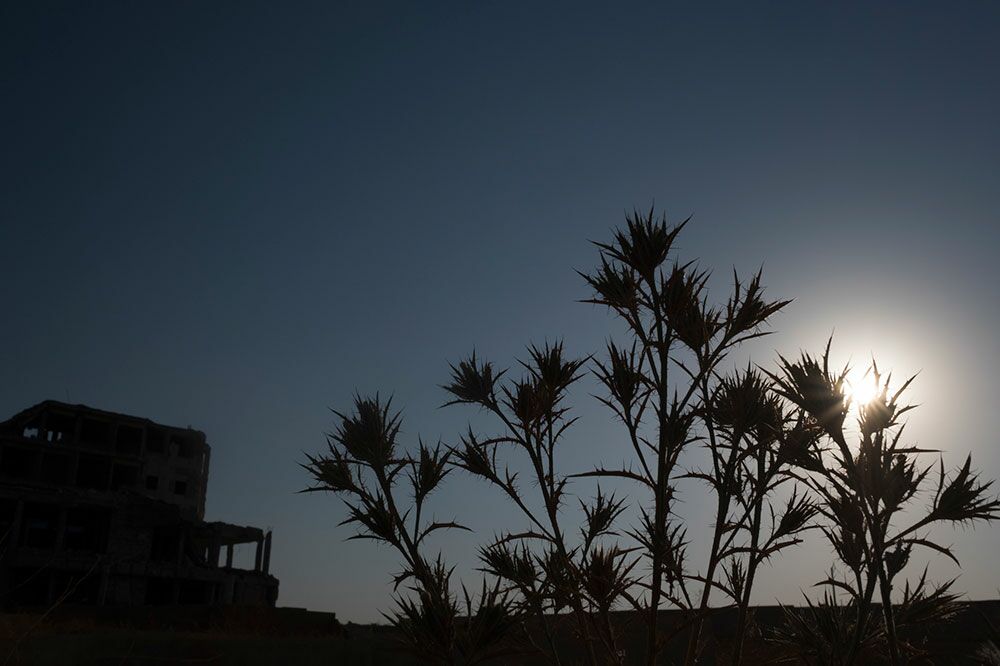
Destruction in Gaza Strip. Photo: UNICEF/Hassan Islyeh, https://www.etcluster.org/emergency/palestine-conflict
Humanitarian crisis in the Gaza Strip
The first CADUS medical emergency response mission in the Gaza Strip is about to start. What will our team find on the ground? The images of the catastrophic humanitarian situation that we know from the media are backed up with figures in UN reports and other sources.
Medical infrastructure severely affected
Over 25,000 people have been killed and more than 62,000 injured since October 2023 as a result of the intervention by the Israeli armed forces in response to the terrorist attack on October 7 in the Gaza Strip. At the same time, only three hospitals, all in the south, are still fully functional. The World Health Organization (WHO) lists 16 other hospitals as partially functional and 20 as out of service. Of 77 primary health care facilities, only 15 are still open. 312 attacks on healthcare facilities were registered. According to the statistics, 337 medical professionals have died and 83 ambulances have been damaged as a result of the attacks. (Source, as at 20.01.2024)
Hurdles for logistics
Both the Gaza Strip’s own food production and its regular imports have come to a standstill. Almost the entire population is threatened by hunger and is dependent on aid. However, access for humanitarian aid is also severely restricted, with almost all border crossings closed. The director of the World Food Program, Cindy McCain, reports:
“People in Gaza risk dying of hunger just miles from trucks filled with food. Every hour lost puts countless lives at risk. We can keep famine at bay but only if we can deliver sufficient supplies and have access to everyone in need, wherever they are.”
The UN Logistics Cluster reports that access has even worsened in the new year. Of 29 aid deliveries planned to reach the northern Gaza Strip, only seven could be carried out in the first two weeks. This means a ten percent increase in transport delays. Among other things, generators that are urgently needed for water supply and wastewater disposal are affected by the import restrictions.
WHO warns of consequences
According to the WHO Situation Report (as of 11.01.2024), 1.93 million people in the Gaza Strip have been forced to flee, which corresponds to 85% of the population. Due to the blatant lack of essentials such as food, water, medicine and fuel, people’s health situation continues to deteriorate. In addition to the many injuries, the WHO is expecting outbreaks of communicable diseases. But care for patients with chronic illnesses such as diabetes, high blood pressure and kidney disease is also no longer guaranteed.
The WHO and other UN organizations are calling for a fundamental change of direction by the Israeli government in the provision of humanitarian aid to the Gaza Strip. This means opening more border crossings for more aid deliveries, fewer restrictions for humanitarian aid workers and safe access to goods for those seeking help. Currently, the establishment of supply points is massively hindered by bombardments and constantly shifting battle lines.
No communication possible
The limited medical infrastructure that still exists can hardly be called by people seeking help: Telecommunications are repeatedly interrupted throughout the Gaza Strip, for example for a whole week on January 12. After part of the network was restored for a short time, there is currently another total blackout. This means that people are unable to keep in touch with their relatives, find out about the current security situation or find out whether and where they have access to food, water, electricity and medical care.
The failures in the telecommunications infrastructure are also making it extremely difficult for emergency response teams to coordinate with each other. Only an Israeli network is still available along a strip of about four kilometers near the border, provided access to this network can be established. Furthermore, a network is made available for humanitarian aid workers in Rafah.
Even before the current blackouts, telecommunications infrastructure in the Gaza Strip was a difficult issue. Palestinian mobile network providers are only allowed to provide a network at 2G level. Although a relaxation of this restriction had been discussed at the urging of the World Bank, this issue is likely to be off the table for the time being due to the current situation.
The limits of imagination
No matter what parameters you look at: The situation for the people in the Gaza Strip is catastrophic. Figures record the situation statistically. The realities behind the figures are still difficult to grasp at the moment. This mission will undoubtedly be very demanding for our team. But we are aware that this is no comparison to what it must currently mean to live (or survive) locally. Because even in this extreme situation, the privilege of the international humanitarian organization applies: we have the opportunity to leave the Gaza Strip again.
By Jonas Gruenwald
Stay informed about our missions, events and humanitarian emergency aid topics – with our newsletter!
Newsletter registration
I want to unsubscribe from the newsletter.



